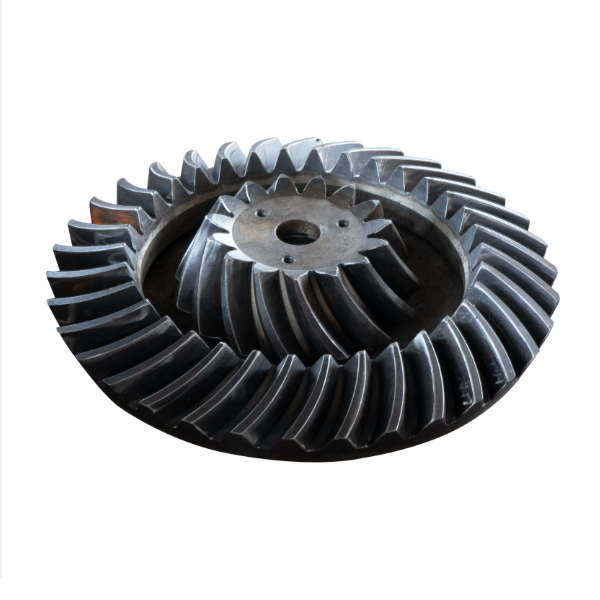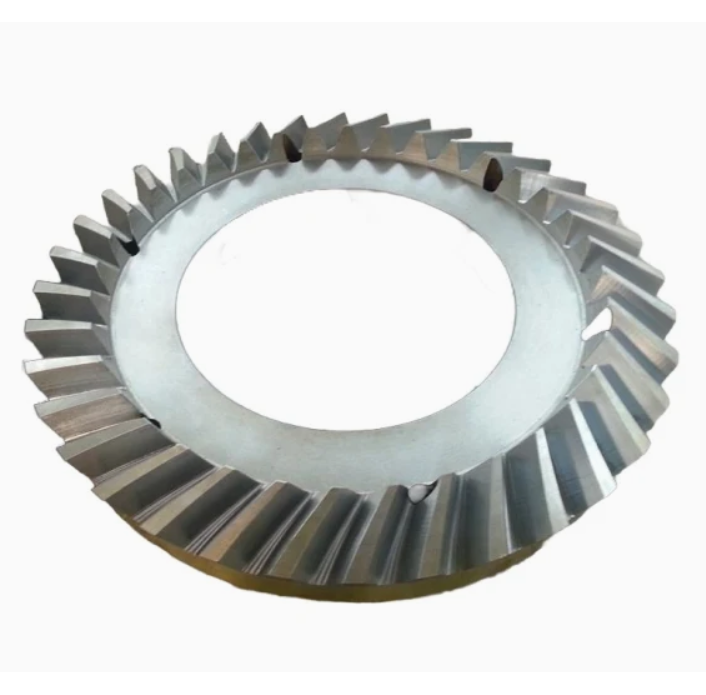Cone Crusher Gear
This paper provides a detailed account of the cone crusher gear, a core transmission component that transfers motor power to the eccentric shaft, driving the moving cone's oscillation. It fulfills key roles in power transmission, speed regulation, and torque amplification, requiring high strength, wear resistance, and precision.
The gear's composition and structure are outlined, including the gear body (alloy steel, solid or hollow), teeth (involute profile with specific parameters), bore/shaft connection, hub/flange, lubrication grooves, and webs/ribs for large gears.
For large bull gears, the casting process is detailed: material selection (ZG42CrMo), pattern making, molding, melting, pouring, cooling, and heat treatment. The machining process covers rough machining, tooth cutting (hobbing or shaping), hardening heat treatment (carburizing, quenching, tempering), finish machining (grinding), and deburring.
Quality control measures include material testing (chemical analysis, tensile and impact tests), dimensional checks (CMM, gear measuring center), hardness and microstructure testing, dynamic performance testing (mesh and load tests), and non-destructive testing (MPT, UT). These ensure the gear meets precision, strength, and durability requirements, guaranteeing reliable operation in heavy-duty crushing scenarios.
More






